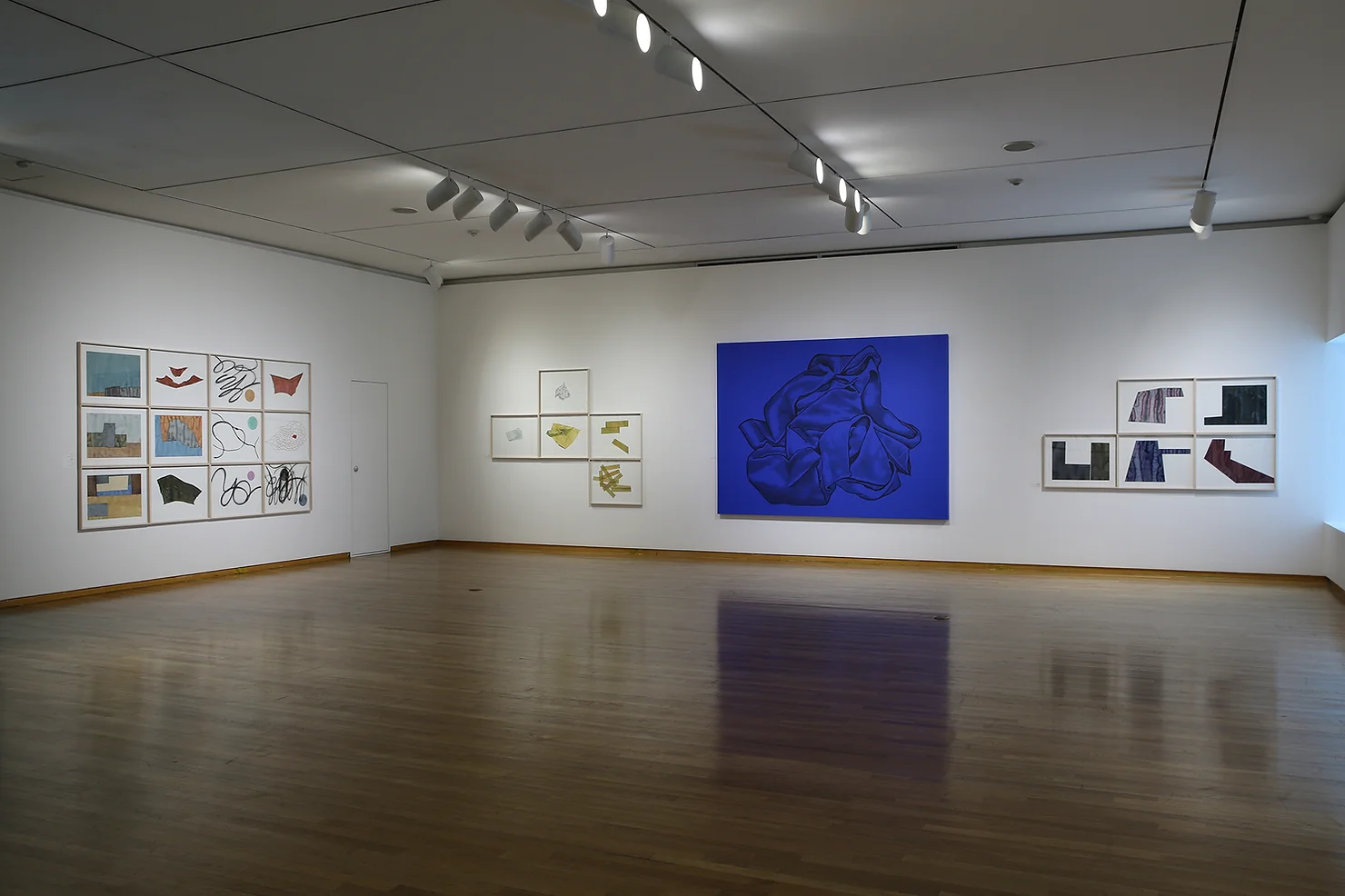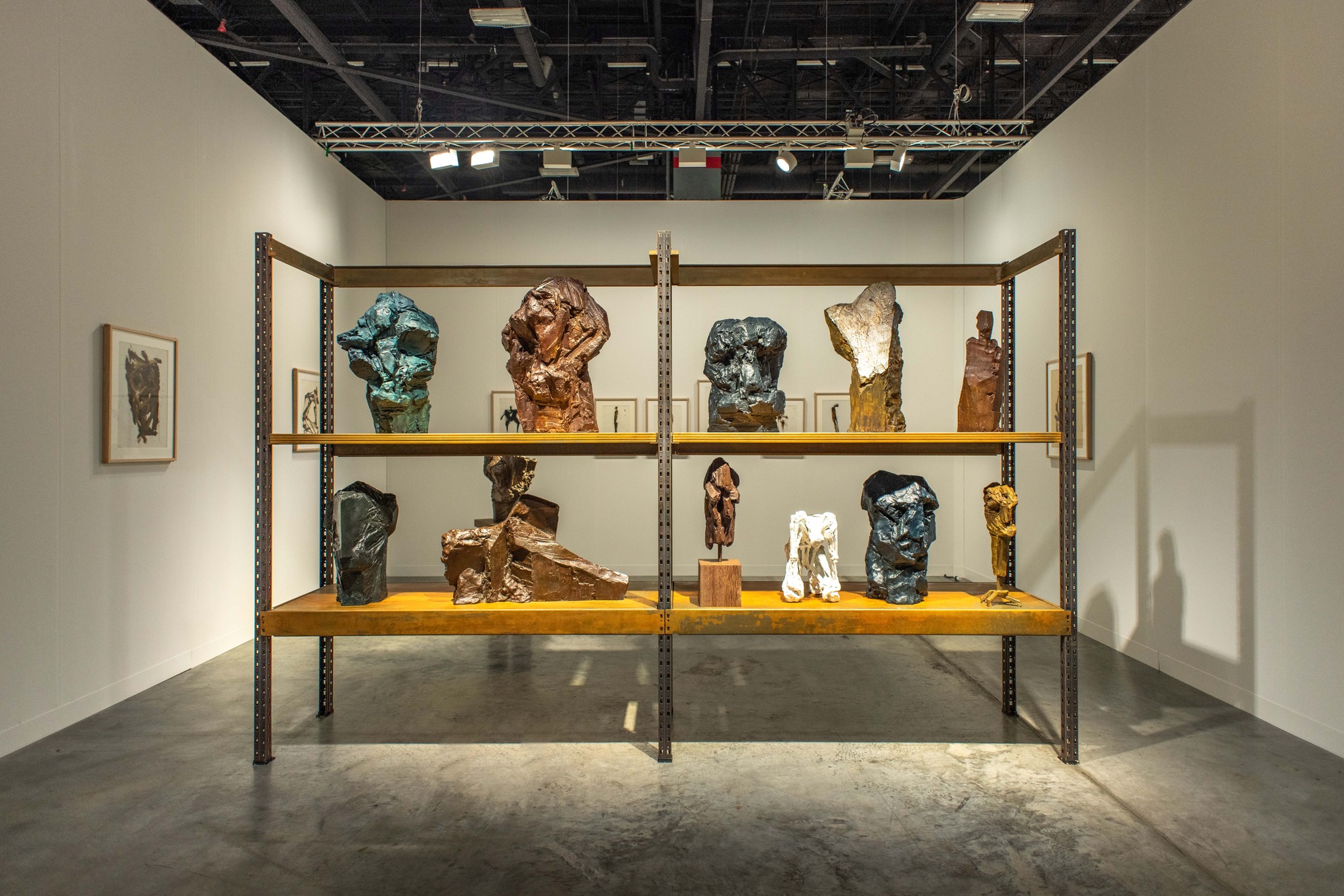Representing the pluralistic trend of Korean contemporary art in the 1990s, artist Yoon Dongchun (b. 1957) has developed a consistent body of work under the theme of “the everydayization of art, the artification of everyday life.” The keyword “everyday” that runs through his work refers to the zeitgeist of our lives in Korea’s modern society, an exploration of the unique characteristics of Korean contemporary art that has adopted Western art, and a search for an alternative methodology of contemporary art by deconstructing and reconstructing the hierarchy between artist, artwork, and audience.
Based on the ‘sociality’ and ‘everydayness’ of art, Yoon wittily and poignantly satirizes the absurdities of our society. His work, which includes conceptual art-based installations and various media such as painting, printmaking, and photography, freely crosses boundaries, overturning, reinterpreting, and developing new concepts to change people’s thinking.

Yoon Dongchun, Gigantic Deformity-Logic, 1992 ©Yoon Dongchun
In the 1980s, Yoon experienced the clash between the authoritarian regime and the pro-democracy student movement, and expressed his reaction to these social phenomena through printmaking. After studying abroad in the United States, the artist was exposed to various media and experimented with expanding the scope of printmaking, such as introducing the concept of installation to printmaking. These experiments evolved into “thought-provoking works” using everyday objects after his return.
When the artist returned from studying abroad, Korean society was filled with stories of black and white logic and ideological conflicts. Yoon compared this situation to a ‘deformity’ and worked on the Gigantic Deformity series. A 5-meter giant wooden crutch painted half and half in black and white, Gigantic Deformity-Logic is a metaphor for the situation of not recognizing each other’s differences.

Yoon Dongchun, Statistics2-1(The Presidential Terms), 2005 ©MMCA
Since Yoon began his work in Korea, he has been critically examining Korean political, social, and artistic realities and expressing them through everyday objects. In 2005, Yoon began working on visual representations of these realities based on statistics and figures, questionnaire surveys, and language usage.
One of his works, Statistics2-1(The Presidential Terms), visualizes the number of presidential terms in Korea using ping-pong balls and drawings. It is a beautiful work of art on the surface, but it is also a source for understanding who has monopolized power.

Yoon Dongchun, Waiting for the Poet Kim Soo-young, 2011 ©MMCA Art Bank
Yoon’s paintings borrow forms from abstraction or minimalism, but the artist captures phenomena, events, and memories that occur in specific contexts in the real world. For example, Waiting for the Poet Kim Soo-young, at first glance, seems to be a Color Field painting, reminiscent of Kazimir Malevich or Ad Reinhardt, with its free-form, darkly colored surface evoking the sublime.
However, as the work’s title, “Waiting for the Poet Kim Soo-young,” suggests, it is dedicated to Kim Soo-young, a poet who wrote surrealist poetry before turning to poetry that reflected on repressed reality and the woes of the common man after experiencing the April 19, 1960s.
Similar to Kim’s attitude of seeking freedom through more active experimentation as he sought a new role as a poet, Yoon’s abstractions are neither avant-garde symbols that express the artist’s inner world nor banners of the universal and absolute spirit of humanity, but ‘concrete abstractions’ of the society we are currently living in.

Yoon Dongchun, Three sets of Hopeful Pills (love, marriage, employment), 2014 ©Shinsegae Gallery
In Yoon Dongchun’s solo exhibition “Juxtaposition – Shade” at Shinsegae Gallery in 2014, the artist presented works that reveal the shades of today’s society through juxtaposition. For example, the artist focused on the shades of anxiety and despair of today’s young people, called the Sampo Generation (Three giving-up generation; dating, marriage, childbirth). Yoon’s work reflects his empathy with the current generation and his reflection as an older adult on the phenomenon of young people giving up on love, marriage, and childbirth as it has become difficult to find a job.
Three sets of Hopeful Pills (love, marriage, employment) is an audience-participatory object installation in which jelly pills are placed in bottles labeled “Love, Marriage, and Employment” and sold at a low price to the audience.
By starting with works that reveal the shadows of society and placing these pills at the end of the exhibition, Yoon hopes that although there are dark shadows in our society, we can eventually find the light of hope.
 Installation view of Yoon Dongchun’s solo exhibition “Ordinary” at Kumho Museum of Art in 2014 ©Kumho Museum of Art
Installation view of Yoon Dongchun’s solo exhibition “Ordinary” at Kumho Museum of Art in 2014 ©Kumho Museum of ArtIn 2017, Yoon’s solo exhibition “Ordinary,” held at Kumho Museum of Art, presented works that explore the beauty that exists in our lives by focusing on “everyday life,” the basic premise and starting point of his work.
From a series of works that dealt with various more artistic events in our daily lives, such as the live broadcast of the search for separated families in North and South Korea and the September 10 candlelight vigil, to a series that juxtaposed the artist’s studio with representative everyday spaces that produce beauty, Yoon created new sensations by bringing everyday objects and events that have been overlooked in art into the museum space.
Or his series On the Street (2016), which depicts everyday objects such as gum tracks and tape that he encounters on the street. This is a series that includes things that are not made of objects to be appreciated, but when they are put on paper, they become contemporary paintings in their own right, bringing something out of the ordinary into art and allowing the audience to witness a new everyday life.

Installation view of Yoon Dongchun’s solo exhibition “About Abstraction” at GalleryMEME in 2023 ©GalleryMEME
In 2023, Yoon’s solo exhibition “About Abstraction” presented abstract paintings of sensory aspects of concrete objects or places that appear in short episodes of the artist’s life.
For example, a red square is placed at an angle in the screen while describing the exciting and terrifying experience of the “red book,” and a light blue circle is placed in the center of the screen while recalling the soju he drank while living on his own after being rejected from college.
These are sensory and concrete metaphors of life that cannot be reduced to abstract propositions, and the artist suggests that art is not something that can be encountered so rarely and intermittently, but is omnipresent in our daily lives.
In this way, Yoon tells the stories of our daily lives through art. His art, which is accessible to everyone, exists as an open window of communication that connects us to think about the world around us.
“Art exists for people, not for art. The reason why art is necessary is to help everyone live their own lives as subject.” (MMCA Artist Talk – Yoon Dongchun, September 18, 2021)
 Artist Yoon Dongchun ©The Chosun Daily
Artist Yoon Dongchun ©The Chosun DailyYoon Dongchun graduated from Seoul National University and received his MFA from Cranbrook Academy of Art, USA. Since 1988, he has held numerous solo exhibitions of his paintings, installations, prints, photographs, and drawings, and has participated in more than 300 group exhibitions. In 1992, he was awarded the Gold Prize at the International Asia-Europe Biennale.
His works are in the collections of many museums in Korea and abroad, including the British Museum. As a professor at the Department of Western Painting at the Seoul National University College of Fine Arts for 30 years from 1993 to 2022, Yoon continued to pass on his artistic concerns and insights as an artist and educator through his postgraduate studies.
References
- 윤동천, 갤러리 시몬 (Yoon Dongchun, Gallery Simon)
- 서울대학교미술관, 윤동천 교수 정년퇴임 기념전 <산만(散漫)의 궤적> (Seoul National University Museum of Art, Trail of Diversity)
- 국립현대미술관, 윤동천 | 통계2-1(역대 우리나라 대통령 재임기간) | 2005 (National Museum of Modern and Contemporary Art Korea, YOON Dongchun | Statistics2-1(The Presidential Terms) | 2005)
- OCI 미술관, 탁류 (OCI Museum of Art, Muddy Stream)
- 금호미술관, 일상_의 (Kumho Museum of Art, Ordinary)













